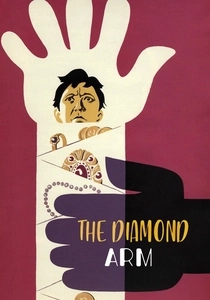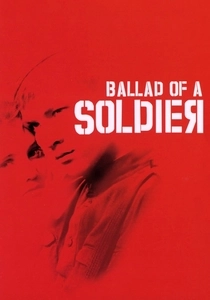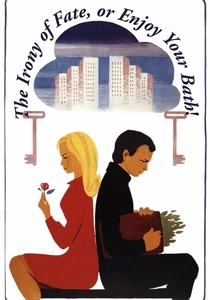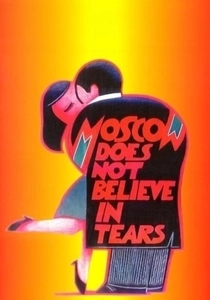Soviet cinema has a rich tradition of crafting stories that capture the essence of love, often set against the backdrop of historical events or everyday life. This curated collection of 10 Soviet films explores the many facets of love, from the passionate to the poignant, offering a unique perspective on romance through the lens of Soviet filmmakers. Each film in this selection not only provides a window into the cultural and historical context of the USSR but also resonates with universal themes of love, making them timeless treasures for film enthusiasts worldwide.

The Diamond Arm (1969)
Description: While primarily a comedy, this film includes a subplot of love and mistaken identity, making it a unique addition to the list. It showcases how love can unexpectedly enter one's life.
Fact: It's one of the most popular Soviet comedies, often quoted and referenced in Russian culture.
 Watch Now
Watch Now 
The Cranes Are Flying (1957)
Description: Set during World War II, this film captures the tragic love story of Veronika and Boris, whose lives are torn apart by the war. Its inclusion reflects the depth of love amidst the backdrop of conflict and sacrifice.
Fact: It won the Palme d'Or at the Cannes Film Festival in 1958, highlighting its international acclaim.
 30 Days Free
30 Days Free 
The Ballad of a Soldier (1959)
Description: A touching story of a young soldier during World War II, who, after performing a heroic act, is granted a short leave to visit his mother. His journey home becomes a series of encounters with love and kindness. It's included for its portrayal of love in times of war.
Fact: The film was nominated for an Academy Award for Best Original Screenplay, showcasing its international recognition.
 30 Days Free
30 Days Free 
The Station Master (1972)
Description: Based on a short story by Alexander Pushkin, this film tells a tragic love story set in the 19th century, highlighting the themes of love, duty, and sacrifice. Its inclusion reflects the timeless nature of love stories.
Fact: It was part of a series of films adapting Pushkin's works, showcasing the literary heritage of Russia.
 30 Days Free
30 Days Free 
The Irony of Fate (1975)
Description: A classic New Year's Eve comedy, this film tells the story of a man who, after a night of drinking, ends up in the wrong city and apartment, leading to a series of comedic and romantic misunderstandings. It's included for its light-hearted take on love and fate.
Fact: It has become a tradition in Russia to watch this film every New Year's Eve, making it a cultural phenomenon.
 30 Days Free
30 Days Free 
Office Romance (1977)
Description: This film humorously explores the dynamics of workplace romance, showing how love can blossom in the most unexpected places. It's included for its depiction of love in the professional environment.
Fact: The film was a massive hit in the USSR, leading to a sequel and numerous stage adaptations.
 30 Days Free
30 Days Free 
Moscow Does Not Believe in Tears (1980)
Description: This film is a poignant exploration of love, friendship, and the challenges of life in Soviet Russia. It follows three women over two decades, showcasing their struggles and triumphs in love and career. Its inclusion in this list is due to its deep emotional resonance and depiction of enduring love.
Fact: The film won the Academy Award for Best Foreign Language Film in 1981, making it one of the most internationally recognized Soviet films.
 30 Days Free
30 Days Free 
A Cruel Romance (1984)
Description: Based on the play "A Nest of Gentlefolk" by Ivan Turgenev, this film delves into the complexities of love, social status, and personal freedom in 19th-century Russia. Its place in this collection is due to its exploration of love's cruelty and beauty.
Fact: The film was one of the highest-grossing Soviet films of the 1980s.
 30 Days Free
30 Days Free 
The Lady with the Dog (1960)
Description: An adaptation of Chekhov's famous story, this film explores an illicit love affair, capturing the nuances of love, guilt, and the search for meaning. It's included for its sophisticated portrayal of love.
Fact: The film was praised for its faithful adaptation of Chekhov's work and its subtle cinematography.
 30 Days Free
30 Days Free 
The Love of Three (1990)
Description: This film, set during the late Soviet era, examines the complexities of love triangles and the impact of personal choices on relationships. Its inclusion reflects the evolving portrayal of love in Soviet cinema.
Fact: It was one of the last films produced before the dissolution of the Soviet Union, capturing the changing times.
 30 Days Free
30 Days Free 








